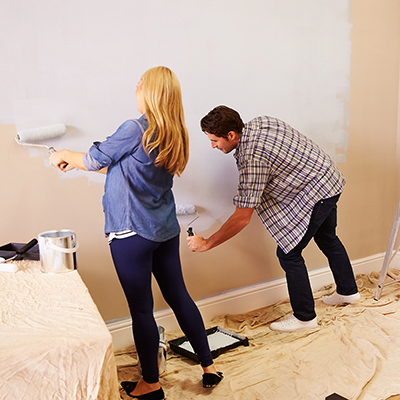How to Fix Paint Chips on a Wall

Last updated September 7, 2023
Every wall has imperfections. Areas may be bumpy or uneven, and corners can chip. But when chipped paint becomes an eyesore, repair it yourself. Learn how to fix paint chips on a wall for a quick refresh without repainting the whole room.
Read this guide to learn how to fix peeling paint or chipped paint. It will outline how to repair paint chips and repaint them to blend with the rest of the wall. You’ll also learn how to prevent paint from bubbling, peeling or chipping in the first place. Doing your own paint chip repair can quickly upgrade a worn wall.
Difficulty:
Beginner
Duration:
Under 2 hours
Table of Contents
Why Does Paint Peel?
Prepare the Area and Remove Paint
Patch the Wall
Sand the Patched Areas
Clean Off Sanded Dust and Apply Primer
Paint the Patch to Match the Wall
Why Does Paint Peel?
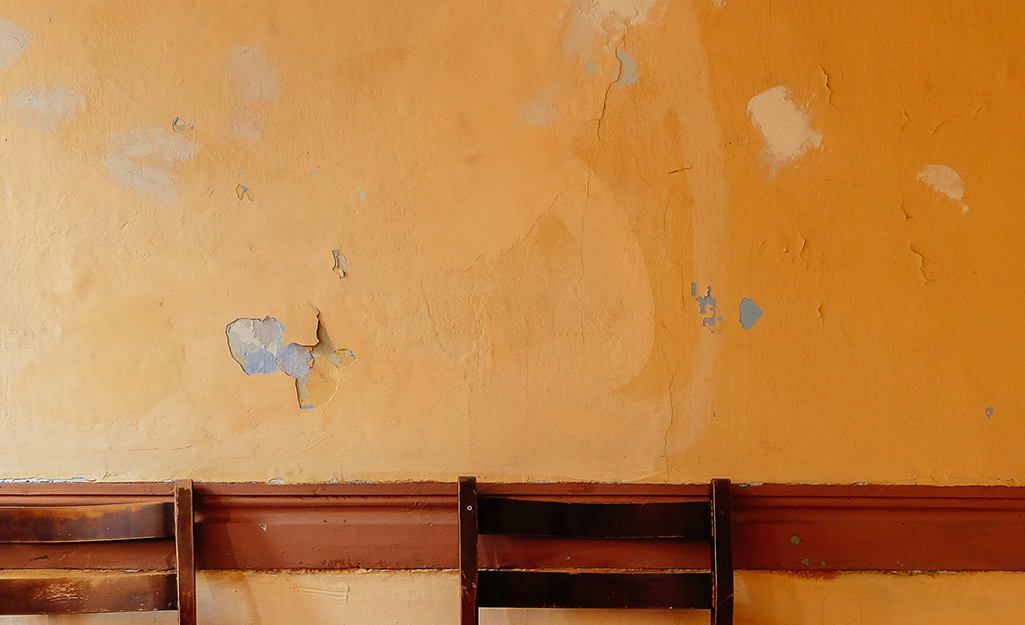
When you’re learning how to fix paint chips on a wall, it helps to know the cause of the issue. Paint adheres best to a clean wall that’s free of moisture. It peels and chips when the surface wasn’t properly prepared.
Here are common reasons why paint is chipping and peeling:
- Dirty or oily wall - The paint stuck to the grime, not the wall.
- No priming - The paint had no built-in primer and was applied directly to the drywall.
- Improper priming - The primer didn’t fit the conditions. It may have been applied unevenly or with a thin coat.
- Poor-quality paint - The paint has aged and stopped adhering.
- Rushed painting - The paint didn’t have enough drying time between coats.
- Latex paint over oil paint - The oil paint repels the water in the latex paint. The latex can’t adhere and flakes off.
- Moisture - The wall has excess moisture from condensation or a leak.
Tip: Paint can bubble due to moisture or water damage. Before you start your repair, rule out any water problems. If the paint sags and looks wrinkled, water is likely getting in. Fix any leaks and damaged surfaces before priming and painting.
Prepare the Area and Remove Paint
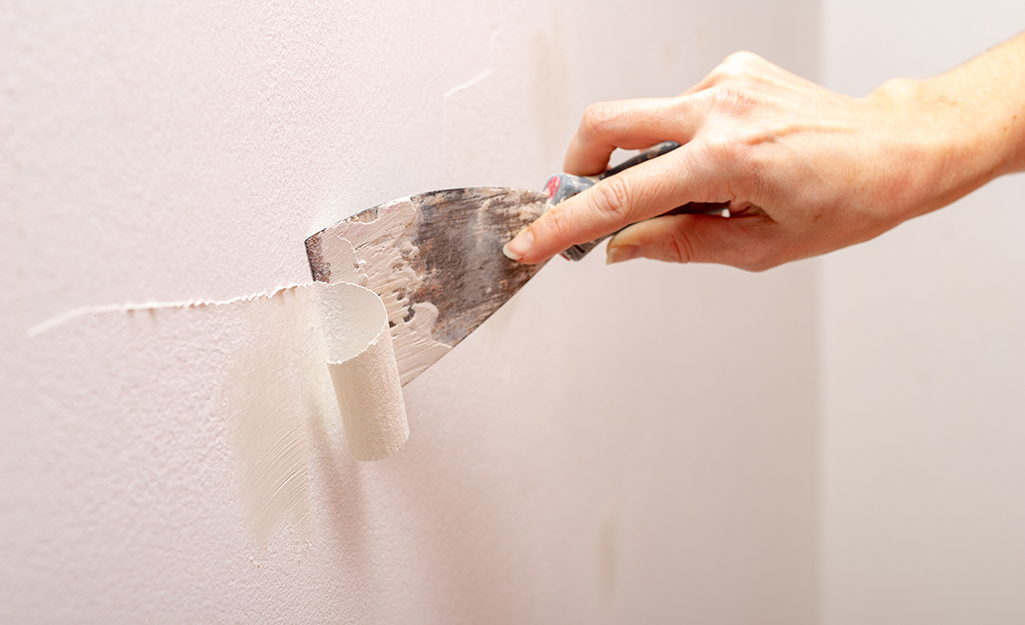
Old paint can chip, flake or peel. When you’re wondering how to fix chipped paint, know that painting over it is a temporary solution. For a professional finish, remove the old paint first. It’ll give you long-lasting results and a smoother look.
With minor paint chips, just repaint the patch. If there’s widespread paint peeling, it’s best to repaint the whole wall. It’ll also prevent constant touchups for newly chipped paint.
To start with your chip repair, begin by removing the old paint. Wear safety glasses and a dust mask while scraping. This helps prevent paint dust from getting in your eyes and lungs.
Safety Tip: If your home was built before 1978, it may have lead-based paint. Never remove lead paint by yourself. It can be hazardous to your health. Contact a professional for lead-based paint removal.
When learning how to fix paint chips on a wall, you’ll need basic sandpaper, patching and repair supplies:
- Find a paint scraper, wire brush, sandpaper and a primer.
- Spackle, paint and a paint applicator are used later in the process.
- Lay out drop cloths or a tarp to protect your floor.
- Remove furniture from the area or cover it.
- Use painter’s tape around trim or baseboards. It helps protect them from paint drips and spatters.
Remove the biggest chips first. Then, work your way down to tiny paint flakes. Be careful not to damage the surface of the wall. Follow these steps to remove chipped or peeling paint:
- Hold your paint scraper or putty knife at an angle.
- Slide your scraper along the wall. Gently lift off the peeling paint.
- Use a wire brush to remove the smaller pieces of loose paint.
- Make sure to remove any paint that’s next in line to chip. It’ll be loose and come off easily.
- Lightly sand the area around the chip.
- When no more paint chips flake off, you’re ready to patch the area.
Sanding gives the wall some tooth. It’ll also help the new paint adhere and blend smoothly.
Patch the Wall
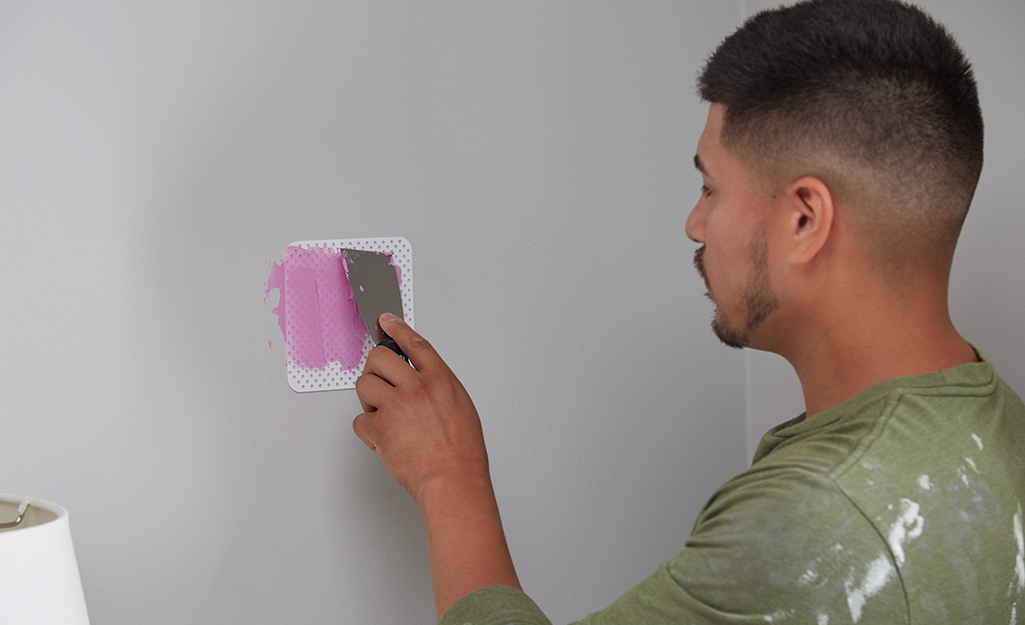
After the loose and chipped paint is removed, fill in the areas without paint. Knowing how to fix chipped paint correctly will help your wall look like new. Use the right tools to get a smooth and even surface.
To repair the paint chips, you’ll need patching and repair supplies:
- Use spackle or drywall patching compound to fill gaps.
- Spackling paste is excellent for filling small areas.
- Larger low or shallow spots may be repaired better with joint compound.
- If the paint has chipped off a wooden surface, use a wood filler instead.
- For peeling paint on drywall seams, try using drywall taping tools to fill long cracks.
Fill in areas of chipped paint by following these steps:
- Spread a layer of spackling on the damaged areas. Use a putty knife or flat-bladed drywall knife to smooth it like frosting.
- Let each layer dry per manufacturer’s instructions before adding another one.
- Continue to apply thin layers.
- Build the chipped area so it’s even, or flush, with the painted wall.
- Fill any other shallow parts or holes to make them flush with the surface as well.
- Let the wall dry for 24 hours or as directed.
- If you need to speed up the process, use a hair dryer. Set it on low and keep it moving.
Sand the Patched Areas
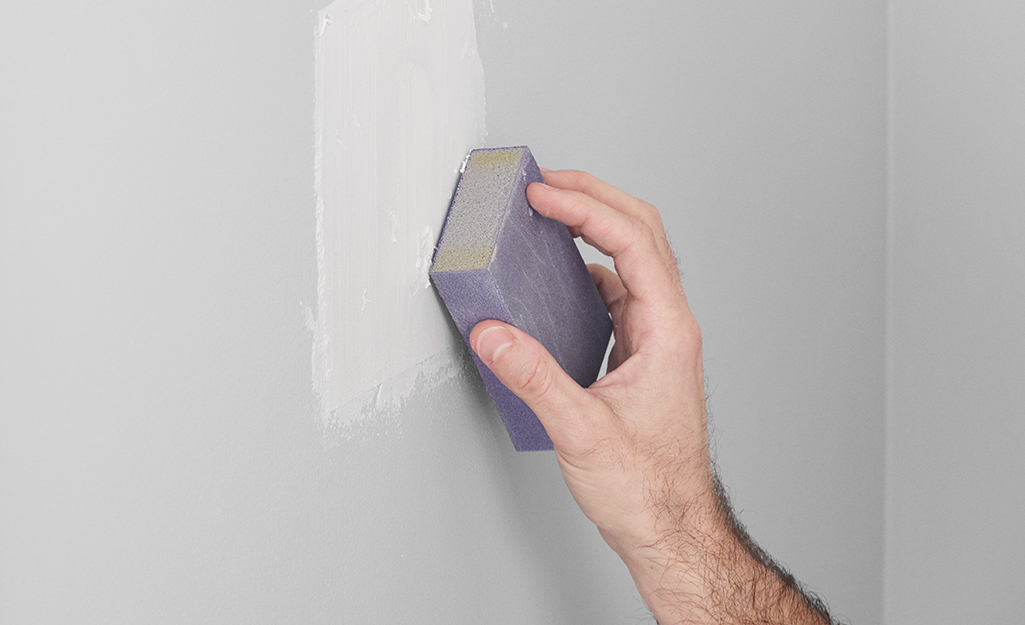
Once all the patched spaces on the wall are completely dry, it’s time to smooth the wall. Part of knowing how to fix paint chips on a wall is being patient. Sanding too early will give your spackle an uneven surface. If spackle sticks to your sandpaper, it’s not dry yet.
Smooth the patch with fine grit sandpaper. A range from 180- to 220-grit works. Sand the wall with one of the following options:
- A stiff sanding sponge
- A sanding block
- A sheet of sandpaper wrapped around a flat piece of wood
- An orbital sander
If you’re a visual person, check the smoothness with a rubbing. Grab a piece of paper and a crayon. Hold the paper over the patch and lightly color the paper. Any high spots will show up darker. Now you know where to sand a bit more.
Use these tips to get the patched area blended well:
- Hold the sander flat against the wall.
- Avoid sanding down your compound too much.
- Stop every so often and rub your fingers over sanded areas. This helps you gauge smoothness.
- Sand down any ridges where the spackle meets the wall.
- Level out all patched areas.
- Lightly sand the portion of wall that you’re repainting.
Tip: If the walls have a textured surface, you may need to texture the patched areas to match. Using the round end of a small artist’s paintbrush works well. Gently make tiny indents in the spackle to get the same texture as the wall. If there's an applied texture like orange peel or stucco, add that on top of the patch.
Clean Off Sanded Dust and Apply Primer
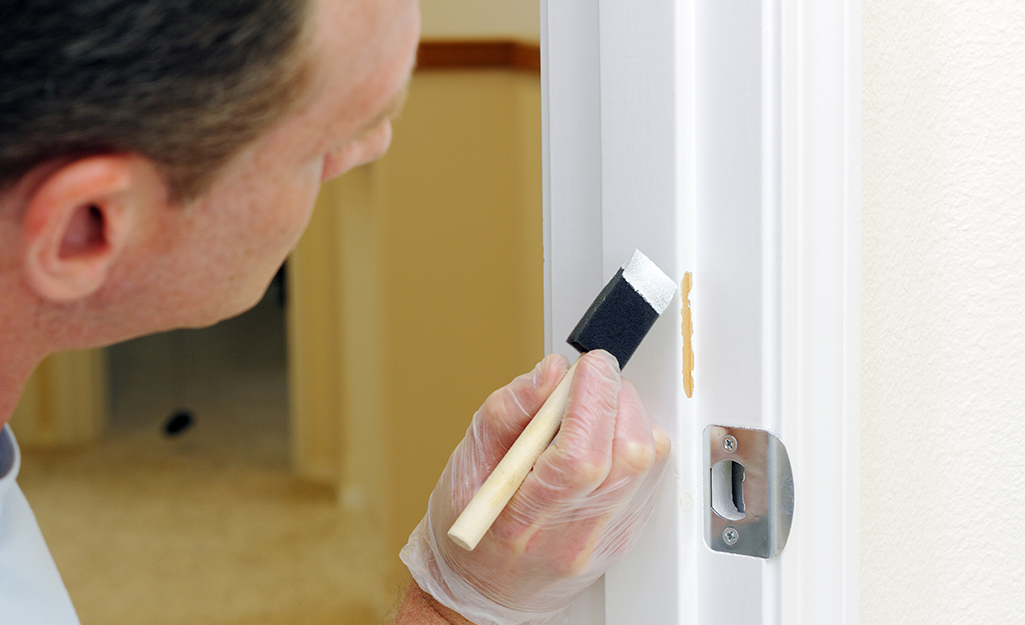
Priming is important when you’re discovering how to fix peeling paint. When the holes from the paint chips are filled, clean them up. Then prepare for primer:
- For large repairs, vacuum up any dust from the sanding.
- Use a cloth or damp sponge to wipe the area free of any sanding grit.
Next, cover the repaired areas with a quality primer. A primer helps the paint adhere to the wall. It also seals out moisture. Priming before painting is an especially good idea if moisture caused the peeling paint.
Tip: Wait until the cleaned area is completely dry before priming. Any dampness or moisture can cause the new paint to peel.
Apply the primer. It should be heaviest over the patch. Feather it out over the surrounding areas that you sanded. That means drag your paint brush from the inside of the paint and pull it outward lightly.
Follow the manufacturer’s instructions for drying time. Consider the humidity of the room you’re priming. Allow extra drying time if needed.
Paint the Patch to Match the Wall
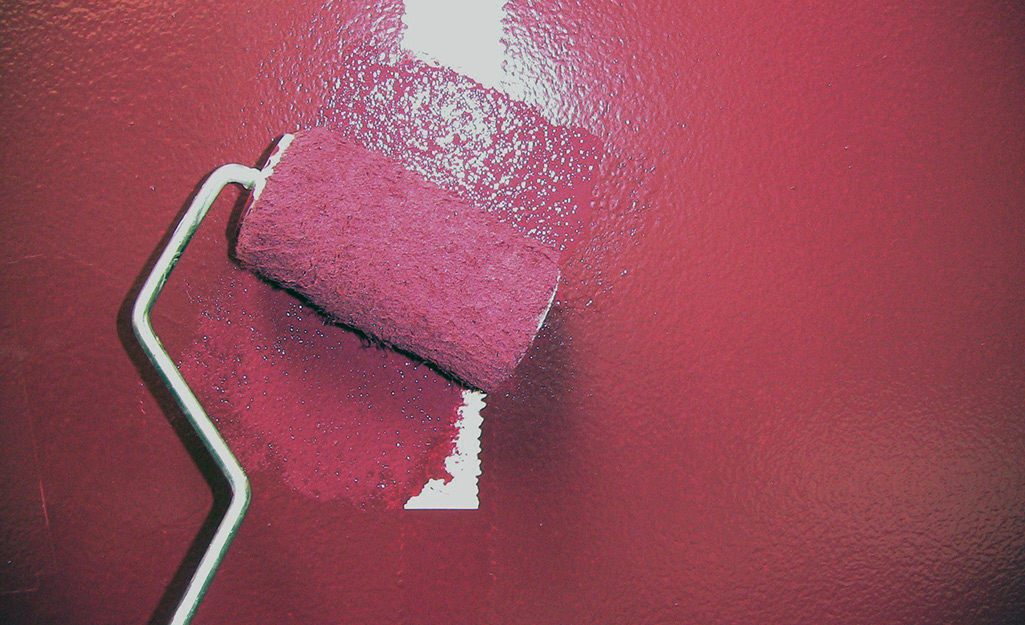
The last step in how to fix peeling paint is repainting the area. Keep these tips in mind when painting the patched chip:
- Wait until the primer is completely dry before repainting.
- If you made a relatively small repair, you’ll only need to cover a small area with new paint.
- Use the same paint color that was initially used on the wall.
- If possible, use the same method of painting to fix this patch too.
It’s especially important to match the paint method on large patches. For example, if your wall was originally painted with a roller, roll on the paint. Matching the applicator isn’t as critical for small chip repair:
- Start painting inside the patched areas and move outward.
- Cover the area that you sanded and primed with paint.
- Blend the new paint into the old paint. Feather the edges as you go.
- Once the paint dries, the patched area should blend into the wall.
Now that you know how to fix chipped paint, it’s time to get started. Tackle your next project with quality paint and painting tools. The Home Depot delivers online orders when and where you need them.

